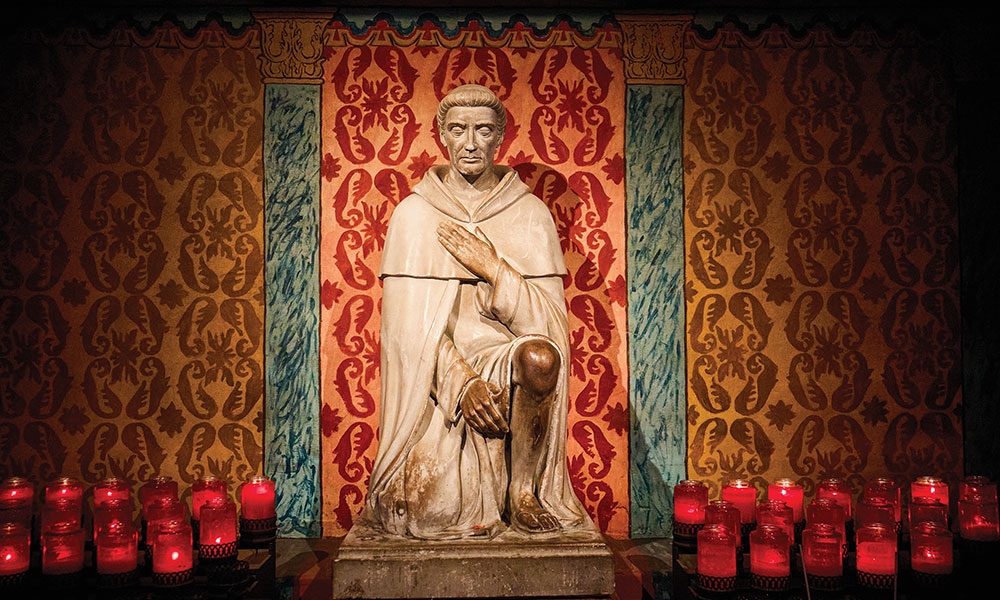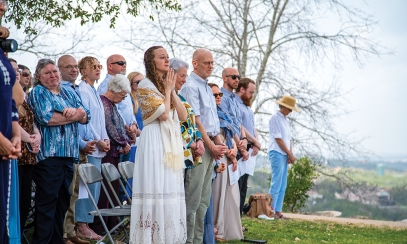
Preaching was St. John Capistrano’s gift
John Capistrano was at the height of his legal career when he was appointed governor of Perugia, Italy in 1412. He married a daughter of one of Perugia’s leading families and got caught up in the wars between cities happening at that time.
John Capistrano was at the height of his legal career when he was appointed governor of Perugia, Italy in 1412. He married a daughter of one of Perugia’s leading families and got caught up in the wars between cities happening at that time.
He was captured and spent some time in prison where he thought about his life and decided to become a religious, despite the fact that he was married. Paul Burns writes in Butler’s Lives of the Saints that he seems to have had a vision of St. Francis, who appealed to him to enter religious life.
After his release from captivity, he was dispensed from his marriage and made plans to enter the Friars Minor. Burns wrote that he rode to a convent sitting backward on a donkey, inviting children to pelt him with muck as he passed. He was admitted as a novice in 1414 and was ordained in 1420.
John spent most of the rest of his life preaching as a missionary, attracting huge crowds wherever he went. He was especially popular among university students.
He organized the Franciscan Observant Friars and was called “the apostle of Europe” because of his preaching in Italy, the Holy Land, Austria, Germany, Poland, Hungary and Moravia. The Observants tended to live in small groups in remote places. They were dedicated to preaching, and John became one of their most effective voices. Burns wrote that John was also concerned with the care of the sick, especially of lepers. He was involved in the foundation of the Hospital of Santa Maria della Scala and Consortium of Charity in Milan.
He worked hard to end the division in the Franciscans, with the order split into two camps over the issue of poverty. John collaborated with his mentor St. Bernardino of Siena and Sister Colette in reforming the Franciscans, helping them navigate a balanced course between the two extremes of being overly lax and overly austere. In 1443, he became vicar general of the Observants.
His work took a different course in 1451 when Pope Nicholas V appointed him inquisitor general in Hungary and Bohemia with a mission to convert or subject the Hussites and other heretical groups.
John died of the plague in 1456. He was canonized in 1690 or 1724, depending on the source. His feast day is Oct. 23, and he is the patron of military chaplains.
The swallows
St. John Capistrano has a unique presence in the New World. He is the saint of the American cliff swallows, who come back to the mission of San Juan Capistrano in southern California every year around St. Joseph’s feast day of March 19.
The Spanish Franciscan missionaries built the mission in 1776, and the Serra Chapel, built in 1782, is the oldest building still in use in California. The Capistrano birds made their nests in the eaves of the mission when it was built near two rivers.
The swallows return from wintering in Argentina, and they are welcomed with a celebration, the Fiesta de las Golondrinas, which takes place on March 19.
And every year around the Day of San Juan (Oct. 23) the cliff swallows of San Juan Capistrano swirl into the sky and head back to Argentina, 6,000 miles south, according to Journey North.
Mary Lou Gibson is a freelance writer who loves to explore the lives of saints. She is a member of St. Austin Parish in Austin.



